Follow us and stay on top of everything CRO
Read summarized version with
Marketers, let’s face it: you’re in the business of attention. Every campaign, every piece of content, every touchpoint—competing for that precious moment when a customer decides to engage.
But how do you cut through the clutter in a world where the average person is exposed to thousands of brand messages daily? How do you ensure your efforts aren’t just noise but signals that resonate?
The answer lies in the numbers…
In a data-driven landscape, gut feelings aren’t enough. Effective decision-making requires both internal metrics and industry benchmarks. Combining market insights with detailed analytics allows businesses to refine strategies, boost conversions, and enhance customer loyalty.
This blog will highlight key statistics to support data-driven decisions and improve engagement.

Customer engagement statistics across digital channels
Email marketing
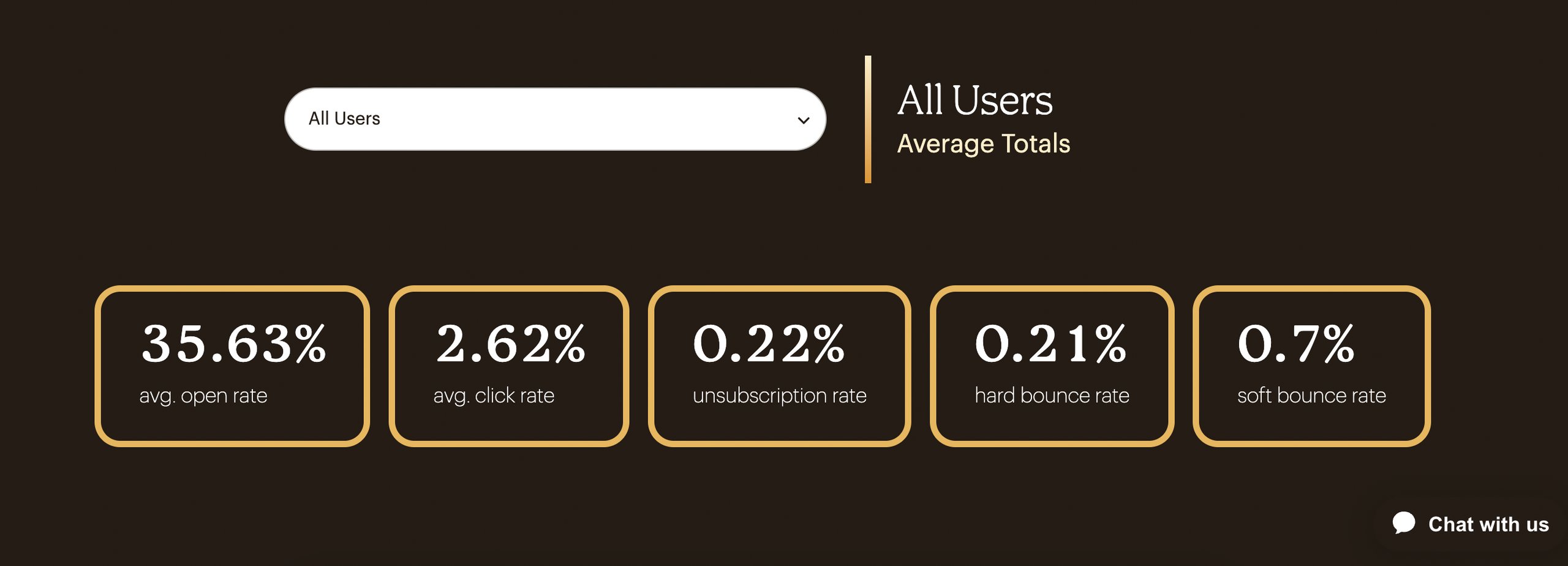
(Source: MailChimp-Email Marketing Benchmarks)
1. The average open rate for email marketing campaigns across industries is 35.6%.
This statistic directly reflects the level of customer engagement with email content. A higher open rate indicates that the subject lines, content, and email strategy resonate with the target audience. It signifies that the messages delivered are relevant and valuable, prompting recipients to act. On the other hand, a lower open rate may suggest a lack of personalization or a need to improve messaging to better align with customer interests and preferences.
For instance, Spotify boosts its open rates by sending personalized email recommendations, leading to higher engagement and satisfaction.
2. The average click-through rate (CTR) for email campaigns is 2.6%.
Effective call-to-actions (CTAs) and segmented lists can improve CTR. Clear and compelling CTAs encourage recipients to click on links within your emails while segmenting your email list ensures each recipient receives relevant, personalized content.
For example, a targeted CTA like “Shop Now for Exclusive Discounts” paired with segmented lists based on purchase history can significantly boost engagement, as recipients are more likely to interact with content that directly aligns with their interests and needs.
3. Email campaigns see an average bounce rate of 0.7%.
A low bounce rate means your emails successfully reach recipients, maximizing engagement opportunities. This ensures your content is delivered and can be opened and interacted with, positively impacting overall customer engagement. Conversely, a high bounce rate could indicate list quality or deliverability issues, potentially limiting engagement efforts.
HubSpot advises that keeping bounce rates low can be achieved by cleaning and verifying the email list to ensure emails reach the right audience. This improves engagement, leading to higher open rates and more interactions.
Social media
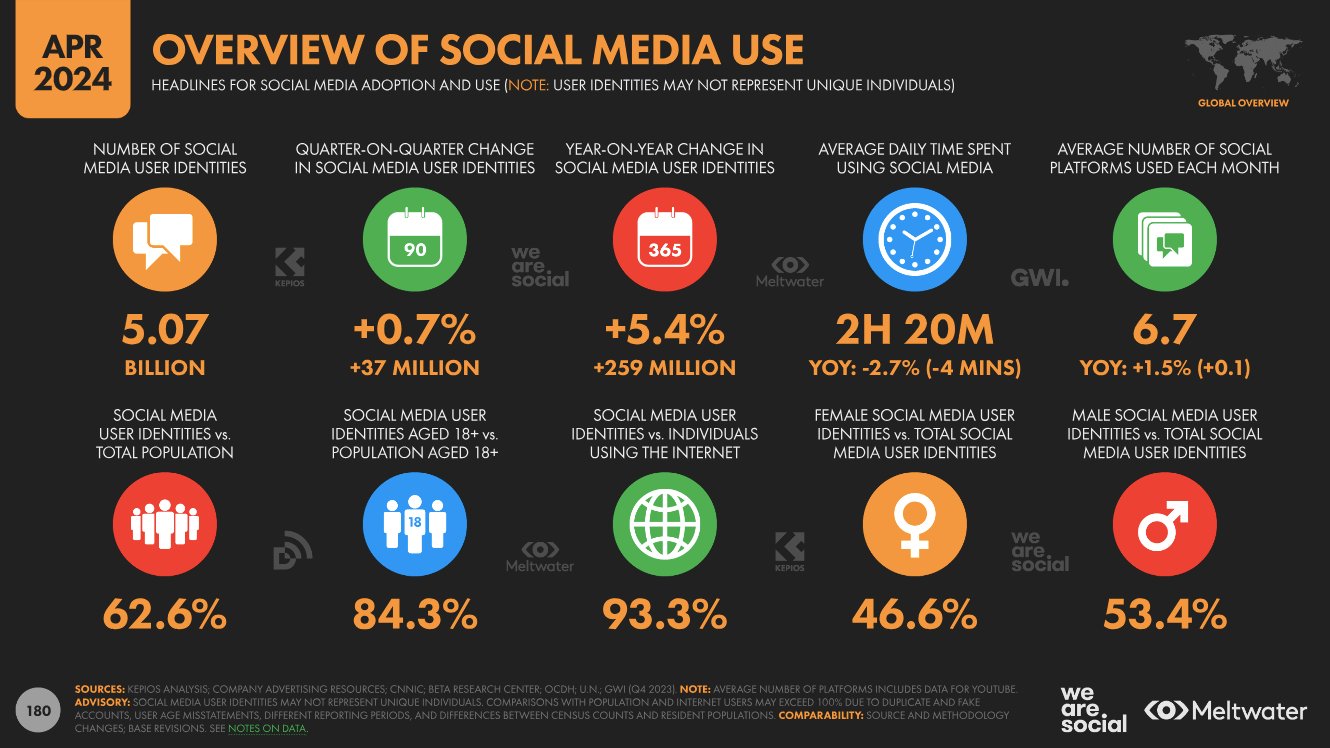
(Source: SocialPilot)
4. The average engagement rate for all post types is 0.71%, 0.59% for photo posts, 1.26% for carousel posts, and 1.23% for Instagram reels.
For marketers, these statistics offer valuable insights for refining strategies and boosting customer engagement. Utilizing tools that streamline Instagram campaigns, such as content schedulers and analytics, enhances the ability to craft compelling posts and track engagement. Leveraging these insights effectively drives multi-platform growth and strengthens customer connections, improving digital presence and impactful results.
5. 38.7% of people worldwide use Facebook each month!
As the third most popular app globally, Facebook offers a massive platform for engagement. With U.S. users spending an average of 30.9 minutes daily on Facebook, businesses have ample opportunity to connect with their audience.
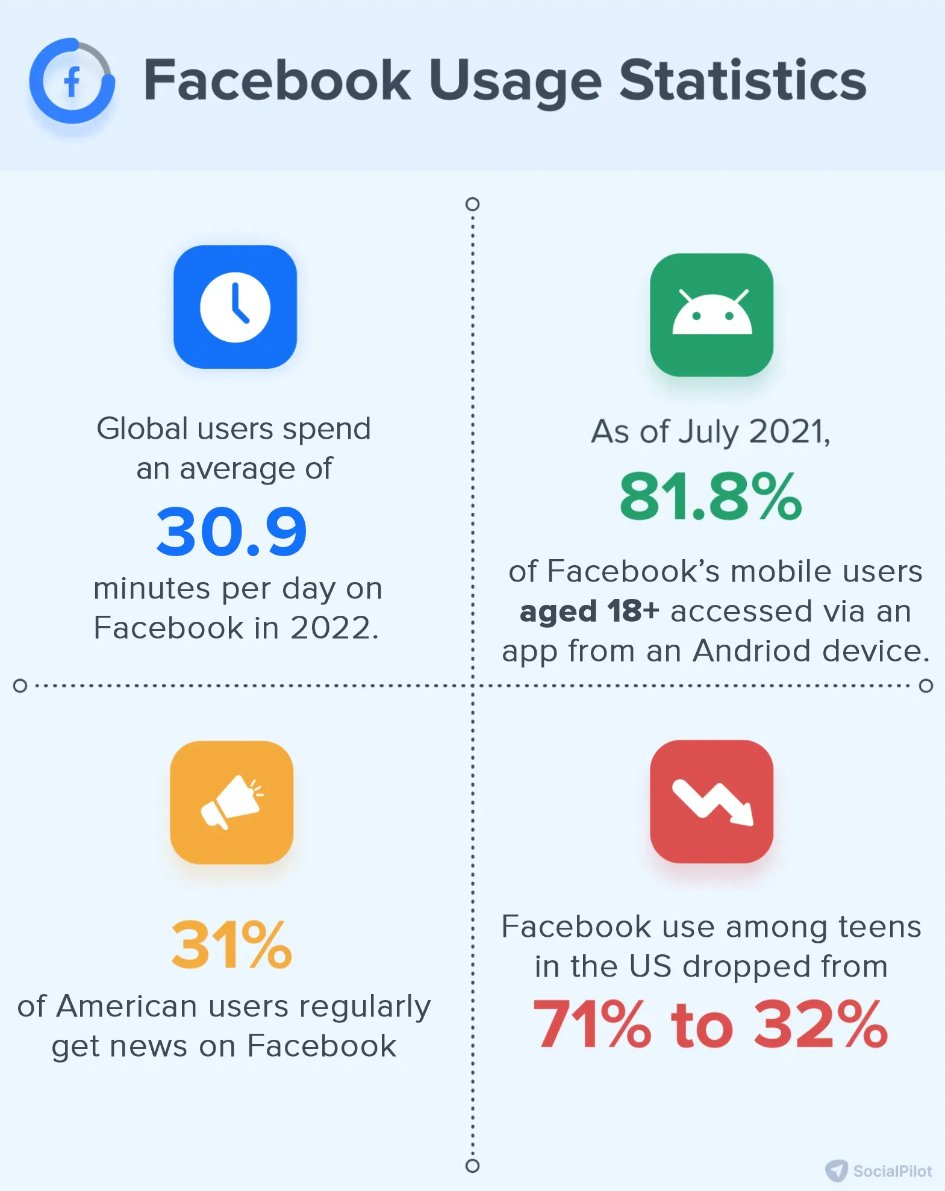
Effective strategies include creating compelling content, targeting ads, and actively responding to interactions. Leveraging features like polls and live videos can further boost engagement while analyzing metrics helps refine your approach. These steps enhance visibility and strengthen your brand’s presence.
6. Using 1-2 hashtags on X (Twitter) can increase engagement by 21%.
Hashtags help categorize content and increase its visibility to users interested in specific topics, encouraging more interactions, such as likes, retweets, and replies.
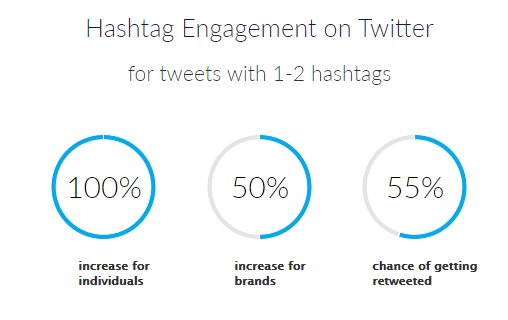
For instance, a brand like Nike might use hashtags like #FitnessGoals and #RunWithNike in their tweets about a new running shoe. This targets fitness enthusiasts and aligns the tweet with widespread discussion, driving engagement through higher visibility and relevance in users’ feeds.
Website and online presence
(Source: Forbes)
7. The average website bounce rate is 41% to 51%.
Visitors leaving a website after viewing only one page can signal customer engagement issues. This often suggests that the content or user experience isn’t meeting expectations, leading to missed opportunities for deeper interaction.
Enhancing content relevance, improving navigation, and creating a more engaging user experience can reduce bounce rates and increase customer engagement. A/B testing helps identify the most effective strategies to enhance these aspects.
MedaliaArt tested different homepage layouts and discovered that a prominent message was more effective at engaging visitors, leading to a 21% reduction in bounce rate.
8. The average time spent on a web page is 54 seconds.
A 54-second average time on a web page highlights the need to capture attention quickly. Creating concise, compelling content with clear messaging and strong calls to action is crucial to boosting customer engagement.
Effective use of this short time can encourage users to stay longer, explore more, and engage more deeply with the brand.
9. 57% of users won’t recommend a business with a poorly designed website.
A well-designed site enhances usability, builds trust, and encourages positive interactions. This leads to higher engagement and more referrals, which are essential for business growth and customer loyalty.
Inside Buzz boosted homepage engagement by 17.8% by simplifying its design and reducing clutter. The updated layout focused on a single CTA and more straightforward navigation, making it easier for visitors to explore content and improve site interactions.
10. Seven out of 10 small business websites don’t include a call to action.
A clear call to action directs visitors to take specific steps, such as purchasing or signing up for a newsletter. Without it, users may leave the site without engaging further, leading to lost opportunities for interaction and conversion and diminishing overall customer engagement.
Mobile app engagement
(Source: cometchat)
11. Companies integrating gamification into their customer engagement efforts achieved a 54% increase in trial usage and a 15% uptick in buy clicks.
Gamification enhances customer engagement by making the user experience more interactive and rewarding, encouraging users to spend more time with the product and take desired actions.
Duolingo, a language learning app, uses gamification with features like streaks, points, and rewards. These elements make learning enjoyable and motivating, increasing user retention and engagement. As a result, users are more likely to keep using the app and convert to paying customers.
12. An average app user uses nine apps daily and 30 applications every month.
With many apps available, app makers should prioritize personalization, targeted push notifications, and gamification to boost engagement. Offering a seamless user experience and regular updates will help the app stand out, encouraging users to return and engage more frequently.
13. Customers who visit online stores using live chat are 20% more likely to convert.
Live chat boosts customer engagement by offering real-time support and personalized assistance. This instant interaction makes customers feel valued and confident, leading to a 20% higher likelihood of conversion as they are more inclined to complete their purchase with immediate help.
Industry-wise customer engagement statistics
Retail industry
14. 81% of retail shoppers conduct online research before buying.
(Source: Invoca)
Since 81% of retail shoppers research online before buying, engaging them with detailed product information and prompt support is essential. This approach helps build trust and can influence their decision to choose your store over competitors.
Optimizing product page information boosted SelectHub’s purchase rate by 13.47%. A/B testing improved navigation and CTA designs, making product details more accessible and enhancing user engagement, leading to higher conversions.
eCommerce industry
15. eCommerce companies experience an average cart abandonment rate of 69.9%.
(Source: Forbes)
Businesses should simplify the checkout experience, communicate clearly, and send personalized follow-ups to improve engagement and reduce abandonment. These improvements can make the purchasing process smoother and more engaging, leading to higher conversion rates.
PayU improved conversions and user engagement by optimizing its checkout process using data-driven A/B testing. By eliminating the email address field, causing friction, they reduced checkout page drop-offs and increased the conversion rate by 5.8%. This change simplified the user experience, underscoring the value of ongoing testing to optimize checkout flow and enhance overall performance.
Financial services industry
16. 50% of consumers expect financial providers to deliver personalized offers for tools, products, and services to help them reach their financial goals.
(Source: MX)

Offering personalized recommendations and support boosts customer engagement by addressing individual needs and preferences. This approach enhances the user experience, builds trust, and strengthens loyalty, leading to deeper connections and more impactful interactions.
Hospitality industry
17. 90% of guests prefer hotels that offer mobile apps for managing their stay.
(Source: hospitalitynet)
Mobile apps boost customer engagement by offering personalized experiences, convenient check-ins, and direct communication with hotel staff. These features make it easier for guests to access services, join loyalty programs, and provide feedback, resulting in higher satisfaction and stronger customer loyalty.
Healthcare industry
18. 47% of patients are more inclined to select healthcare providers who effectively personalize interactions
(Source: Invoca)
Personalized care makes patients feel understood and valued, enhancing their overall experience and strengthening their trust and loyalty. By tailoring communication, treatments, and services to individual needs, healthcare providers can significantly improve patient satisfaction. This personalized approach encourages repeat visits and fosters long-term patient-provider relationships, ultimately leading to better health outcomes and a more engaged patient base.
Tough Mudder boosted session value by 9% by optimizing its mobile site. It redesigned event lists highlighting essential information like location and date and added urgency messages. These changes, tested through multivariate analysis, made it easier for users to find and sign up for events, significantly increasing session value and engagement.
Automotive industry
19. 52% of car buyers research online before visiting a dealership, and 91% are influenced by reviews when purchasing.
(Source: WifiTalents)
Online reviews enhance customer engagement by shaping perceptions and building trust. Positive reviews attract buyers and reassure them, while negative reviews provide insight into areas for improvement. Dealerships actively managing and responding to reviews can strengthen their digital presence, influence purchase decisions, and build stronger customer relationships.
Customer experience (CX) focused statistics
Impact of customer experience on loyalty
20. 86% of customers are willing to pay more for a better customer experience.
(Source: SurveySparrow)
Companies can significantly boost customer engagement and loyalty by prioritizing exceptional service and personalized interactions. This focus on enhancing the overall experience allows businesses to justify premium pricing, as customers recognize the added value and are willing to pay more for it.
21. 88% of customers say the experience a company provides is as important as its products or services.
(Source: Salesforce)
CX is a critical factor in purchasing decisions. Effectively engaging customers through every touchpoint ensures they feel valued and can significantly impact their satisfaction and willingness to return.
This is why testing across channels ensures consistency and effectiveness in customer interactions. It allows businesses to identify and address issues that could impact the user experience, ultimately optimizing engagement and performance across all platforms.
VWO provides the tools to deliver a seamless CX by enabling website and server-side testing across desktops, apps, tablets, and OTT.
CX improvement strategies
22. Brands with a robust customer experience strategy experience see revenue growth 4-8% higher than the industry average.
(Source: Exploding Topics)
Focus on CX initiatives that drive revenue growth, such as boosting customer service, enhancing product quality, and simplifying purchasing. For example, Marriott’s emphasis on personalized service and loyalty programs has significantly increased revenue and strengthened its position in the hospitality industry.
23. Companies using AI report a 20% increase in customer satisfaction.
(Source: TIDIO)
Through AI-driven solutions, companies can anticipate customer needs, offer tailored recommendations, and resolve issues quickly, leading to higher satisfaction. This improved engagement boosts customer satisfaction and strengthens loyalty, as customers appreciate the seamless and proactive service AI enables.
Netflix exemplifies how AI enhances customer satisfaction by personalizing content recommendations based on viewing habits. This tailored approach helps users find relevant shows quickly, improving their overall experience and engagement.
Customer retention and satisfaction statistics
Customer retention rates
(Source: G2)
24. Companies prioritizing customer retention over acquisition are 60% more profitable.
Focusing on customer retention is essential, as keeping current customers engaged and satisfied is more cost-effective than attracting new ones. When businesses invest in retaining and nurturing their current customer base, they foster loyalty and trust, leading to repeat business and more robust brand advocacy.
25. Loyal customers are 5x likely to repurchase and 5x likely to forgive. 4x likely to refer and 7x likely to try a new product or service.
Engage loyal customers by personalizing experiences, offering exclusive rewards, and providing exceptional service. Foster community and encourage feedback to make them feel valued, strengthening their connection to the brand and promoting ongoing engagement.
26. 68% of customers state that a negative customer experience will reduce their loyalty to the brand.
A negative customer experience can significantly damage customer engagement, reduce brand loyalty, and increase the chances of customers switching to competitors.
To maintain engagement and prevent churn, businesses must prioritize delivering positive experiences through personalization, omnichannel experiences, timely support, and proactive communication. Regular feedback collection and continuous improvement through testing are crucial to ensuring positive customer experiences.
27. On average, companies with robust omnichannel engagement strategies retain 89% of their customers, compared to 33% for those with a weak strategy.
(Source: Invesp)
The numbers speak for themselves—having a consistent presence across multiple channels is crucial. Customers expect seamless experiences, whether they interact with you via email, social media, or in person. You’ll keep them returning if you can meet them wherever they are.
Starbucks, for example, uses its mobile app to create a unified experience across in-store, online, and mobile channels. This seamless integration enhances convenience and loyalty, leading to higher retention rates by ensuring customers have a consistent and personalized experience no matter how they interact with the brand.
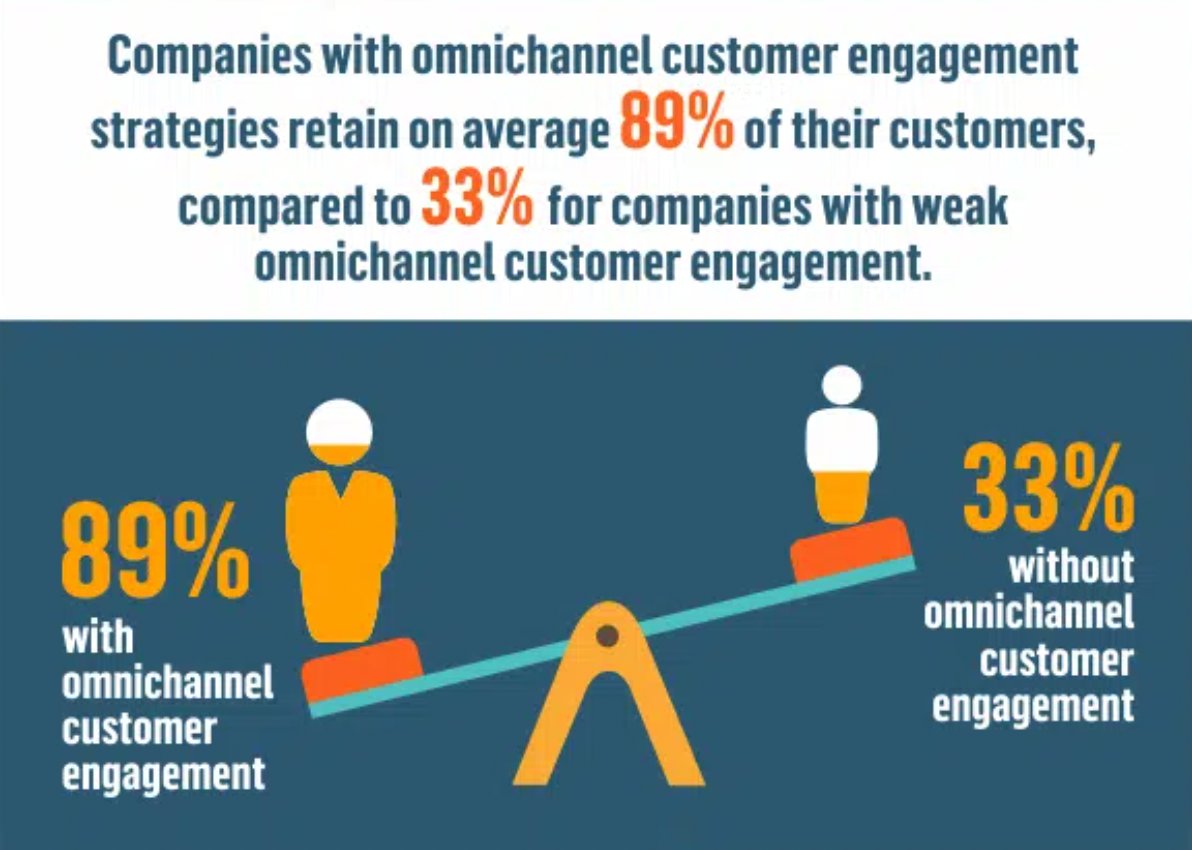
Customer satisfaction scores
(Source: SurveySparrow)
28. Customer retention rates increase by 5% for every 1% increase in customer satisfaction.
Satisfied customers are more likely to remain loyal, engage with the brand, and make repeat purchases. Enhancing satisfaction through quality products, excellent support, personalized experiences, and responsive feedback is critical to driving long-term engagement and business success.
29. 95% of customers who had a bad experience with a company will tell others about it.
Dissatisfied customers often share their negative experiences, leading to disengagement and lost opportunities for repeat business and future sales. This emphasizes the need for prompt and effective issue resolution to maintain a positive customer relationship.
30. Companies with higher customer satisfaction ratings see a 12% increase in stock prices.
Higher customer satisfaction boosts engagement, leading to greater loyalty, repeat business, and positive word-of-mouth. This strong customer relationship enhances a company’s reputation and drives long-term business success and market value.
Personalized customer engagement statistics
Personalization enhances customer engagement by making customers feel recognized and valued. When brands customize their products, services, and communications to align with individual preferences, it creates a more relevant and meaningful experience.
This tailored approach encourages frequent purchases and fosters a stronger emotional connection, increasing loyalty and long-term customer relationships. By prioritizing personalization, brands can transform casual shoppers into committed advocates.
(Source: Sender)
31. 76% of consumers are more likely to purchase from brands that personalize.
32. Personalized emails achieve an impressive open rate of 29% and an outstanding click-through rate of 41%.
33. 66% of customers expect brands to understand their wants and needs.
34. 67% of consumers expect brands to automatically adjust content based on their current context for a real-time personalized experience
One Click Ventures, an eCommerce eyewear retailer, increased conversions by 30% and improved user engagement by leveraging VWO’s custom segmentation to personalize the checkout page based on each user’s location. Previously, their testing was ad hoc, but with VWO Insights, the client adopted a data-driven approach that streamlined their optimization process, driving significant results.
Customer engagement challenges stats
(Source: moengage)
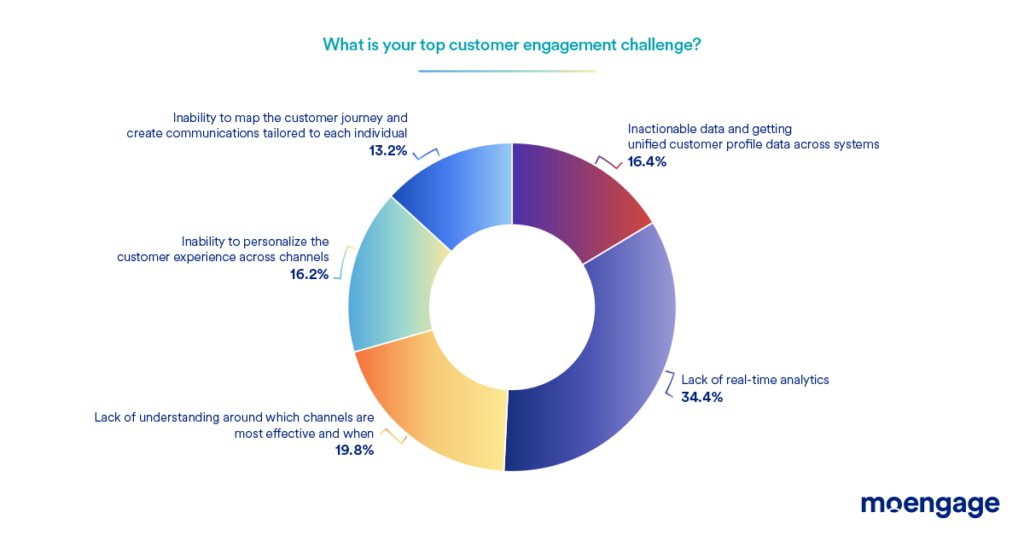
35. Improving real-time analytics is a key focus for marketers, with 34.5% identifying it as a priority in their current tech stack.
Customers now expect brands to understand their buying patterns and deliver personalized experiences. However, many marketers need help meeting these expectations due to current tech stack limitations requiring more real-time analytics.
Without the ability to access and act on detailed customer insights, marketers cannot optimize the customer experience—a critical component of their marketing success.
Marketers can overcome these challenges by upgrading their tech stack to include tools like VWO’s heatmaps and session recordings, which provide real-time analytics and actionable customer insights. Implementing AI-driven solutions and integrating data across platforms will help personalize experiences and optimize the customer journey effectively.
36. Nearly 20% of marketers admit they need help identifying the most effective marketing channels and optimal timing for outreach.
With clear insights, marketers can save resources on strategies that don’t connect with their audience. This underscores the need for advanced analytics platforms to track and analyze customer behavior across various channels. This lets us know which channels perform best and when customers are most responsive for more targeted outreach.
37. Consumers expect quick responses, with 69% wanting brands to reply within 24 hours or less.
(Source: sproutsocial)
To meet rising consumer expectations for quick responses, marketers can leverage AI chatbots and automated systems for immediate, 24/7 support. Additionally, training customer service teams for efficiency and using social media monitoring tools ensures that brands can respond swiftly, maintaining strong customer engagement.
38. While over 80% of brands depend on third-party data, only 60% feel prepared for a future without it.
(Source: Forbes)
Marketers should focus on collecting first-party data through CRM systems, loyalty programs, and personalized experiences to reduce reliance on third-party data. Enhancing on-site data collection by leveraging contextual and behavioral data and exploring alternative sources like partnerships can help build a more self-reliant data strategy.
Impact of customer service on engagement
Strong customer service is as crucial as a solid sales strategy or effective marketing. A well-performing customer service team not only supports sales efforts but also enhances the performance of other departments. When customers feel valued and supported, they’re more likely to buy and recommend the brand to others. These statistics highlight the essential role that excellent customer service plays in a company’s success:
(Source: HelpScout)
39. 68% of consumers say they are willing to pay more for products and services from a brand that offers good customer service experiences.
40. 83% of customers agree they feel more loyal to brands that respond and resolve their complaints.
41. Businesses prioritizing better customer service experiences can grow revenues between 4% and 8% above their market.
42. If the company’s customer service is excellent, 78% of consumers will do business with them again after a mistake.
43. 89% of consumers are more likely to make another purchase after a positive customer service experience.
Customer expectation statistics
Grasping customer expectations is vital to creating memorable experiences. These statistics reveal what customers prioritize, guiding businesses to meet and exceed their needs.
(Source: Salesforce)
44. More than 60% of customers expect customization of everything.

The above figure emphasizes the customers’ expectations for improved personalization. These heightened expectations demand that brands continuously refine their personalization strategies to stay aligned with customer needs. Falling short can lead to satisfaction, as customers now see personalization as a standard rather than a luxury.
45. 56% of customers get frustrated when they have to repeat their information to different representatives.
When customers are required to repeat their details, it disrupts their expectations for a seamless experience and can lead to frustration, affecting their overall engagement. To resolve this, brands should implement a unified customer information system that enables representatives to access details from previous interactions, ensuring smoother communication and a more positive customer experience.
46. Customers expect AI to be safe and trustworthy. Make ethical AI practices a top priority.

Customers increasingly know AI’s impact and expect trust and integrity in business interactions. When these concerns are addressed, customer engagement can improve, as people may gain confidence in a company’s commitment to ethical standards.
Future of customer engagement statistics
New technologies and changing customer expectations are transforming the future of customer engagement. Businesses are placing a stronger emphasis on creating personalized and secure experiences driven by data and real-time interactions.
With significant investments in AI and automation, companies are also addressing challenges like data privacy to meet the demands of today’s consumers. Adapting to these trends is crucial for staying competitive in the evolving market.
Emerging trends
(Source: HubSpot)
47. 71% of leaders plan on increasing their investment in AI chatbots for customer service.
48. 86% of CX leaders believe AI will help them transform the experience they deliver to their customers.
(Source: verloop.io)
49. By 2025, AI will power 95% of customer interactions, meaning 19 out of every 20 will be AI-assisted.
50. 70% of consumers will replace their visits to brick-and-mortar shops or banks with voice assistants over the next three years.
51. The voice and speech recognition market is expected to grow at a 17.2% CAGR to reach $26.8 billion by 2025.
52. 58% of customers say emerging technologies such as chatbots and voice assistants have changed their expectations of companies.
53. 34% of retail customers would be comfortable speaking with customer service through an AI chatbot instead of live chat.
Conclusion
Are you feeling inspired to elevate your engagement game? With insights from these statistics, now is the ideal time to refine your approach—focus on personalizing interactions, optimizing content, and leveraging technology to meet and exceed customer expectations. Whether enhancing email campaigns, revamping your website, or integrating advanced tools, staying ahead of the curve is crucial.
Ready to transform your customer engagement strategy? Dive deeper into VWO solutions and see how they can help you achieve a more significant impact. Start with a free trial today and unlock your business’s full potential.













